Here’s everything you need to know about French stories across six different categories – from timeless fairy tales to mind-bending existentialist novels. I’ll help you pick the perfect French story based on where you’re at with the language, what you’re curious about culturally, and what you’re hoping to get out of your reading time.
92% of French people read at least one book within a 12-month period, according to France Culture’s National Book Center report. I stumbled across this stat while cramming for my French lit course, and it totally blew my mind. No wonder the French have given us some of the most incredible stories ever written – stories that still mess with readers’ heads centuries later.
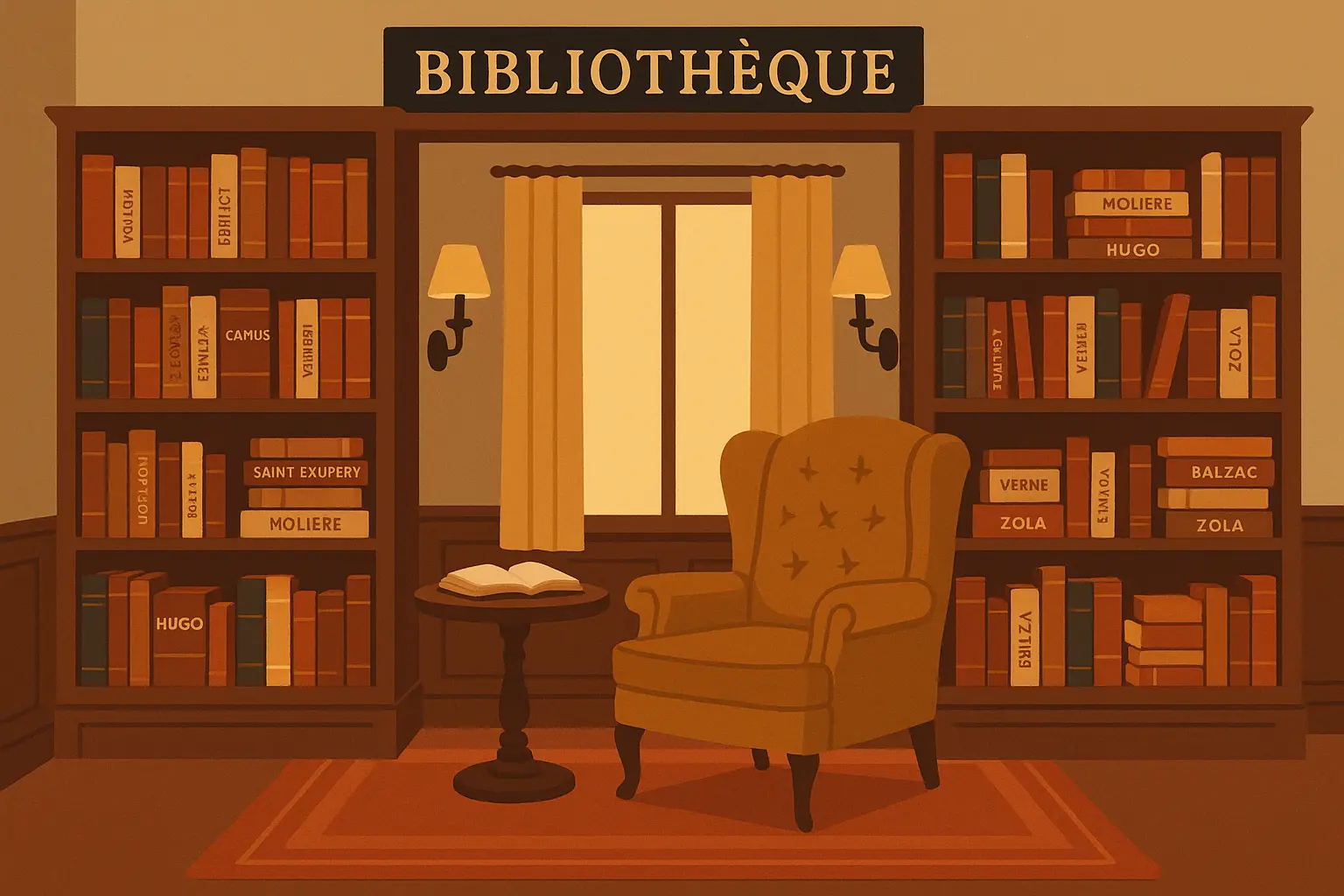
Table of Contents
-
What Makes French Stories Worth Your Time
-
How to Pick the Right French Story (Without Losing Your Mind)
-
The Classics Everyone Talks About (Stories 1-5)
-
Modern French Fiction That’ll Make You Think (Stories 6-9)
-
French Kids’ Stories That Adults Love Too (Stories 10-13)
-
Short Stories That Pack a Punch (Stories 14-17)
-
Historical Tales with Real Drama (Stories 18-21)
-
Regional Stories You’ve Probably Never Heard Of (Stories 22-25)
-
Language Levels (AKA Don’t Bite Off More Than You Can Chew)
-
How to Actually Enjoy Reading French Stories
-
Final Thoughts
TL;DR
-
French stories don’t just entertain – they’ll have you questioning everything
-
Pick stories that match your French level unless you enjoy suffering
-
The classics are classics for a reason, but don’t be intimidated
-
Modern French writers invented existential dread (you’re welcome)
-
Perrault basically created the fairy tale playbook everyone still uses
-
French short stories are masters of the plot twist that ruins you
-
Historical French stories mix adventure with “wait, that actually happened?”
-
Regional folk tales are hidden gems that show France’s wild diversity
-
Understanding the cultural context makes everything click better
-
Start simple, work your way up, and don’t feel bad about using a dictionary
What Makes French Stories Worth Your Time
Here’s what I love about French stories – they don’t just entertain you, they mess with your head in the best possible way. You’ll find yourself thinking about a simple fairy tale days later, wondering if there was more to it than you first realized.
French writers have this incredible talent for making every single word count. There’s no fluff, no wasted sentences. It’s like they took a masterclass in saying exactly what they mean while making you work for the deeper meaning.
But here’s the real kicker – these stories are basically cultural time machines. Whether you’re reading a fairy tale or diving into Camus, you’re getting a front-row seat to centuries of French thinking, social drama, and artistic genius.
The influence is everywhere too. Perrault basically wrote the fairy tale rulebook that Disney still follows. Camus gave us existential angst that every philosophy student quotes. These French writers didn’t just tell stories – they created the templates that everyone else still copies. It’s like understanding the story theme examples that have been shaping global literature forever.
How to Pick the Right French Story (Without Losing Your Mind)
Look, nobody wants to struggle through a book that makes them feel stupid. The trick is being honest about where you’re at with French and what you actually want to get out of this.
Start by figuring out your French level, but more importantly, figure out your patience level. Some days you want a challenge, other days you just want something that won’t give you a headache.
Be Real About Your French Level
Beginner? Start with fairy tales. Seriously. Don’t let anyone tell you they’re “too easy” – Perrault knew what he was doing, and these stories pack more punch than you’d expect.
Feeling confident? Try “Le Petit Prince.” It looks like a kids’ book but will have you questioning your entire existence. Fair warning.
Ready to dive deep? Camus is waiting for you. But maybe grab a coffee first. Or three.
|
Your French Level |
Start Here |
What You’re Getting Into |
Vocab You’ll Need |
|---|---|---|---|
|
Just Starting (A1-A2) |
Little Red Riding Hood, Cinderella |
Simple sentences, familiar words, present tense |
200-500 words |
|
Getting There (B1-B2) |
Le Petit Prince, Bonjour Tristesse |
Mixed tenses, cultural stuff, actual conversations |
800-1200 words |
|
Pretty Good (C1-C2) |
L’Étranger, Madame Bovary |
Complex grammar, literary tricks, cultural deep cuts |
2000+ words |
Don’t be a hero – get the annotated editions if you need them. There’s no shame in wanting to actually understand what you’re reading.
What Are You Actually Trying to Do Here?
Are you trying to learn French, understand French culture, or just read some good stories? Your answer changes everything.
Language learners: Go for the simplified versions with vocabulary help. You’re not cheating, you’re being smart.
Culture nerds: Focus on the historical context. You’ll need background reading, but it’s worth it.
Just want good stories: Pick whatever sounds interesting and don’t overthink it.
Real example: My friend Sarah was tired of only knowing how to order coffee in French. She grabbed “Le Petit Prince” thinking it was a kids’ book – boy, was she wrong! Three existential crises later, her French was way better, but she needed therapy.
How Much Time Do You Actually Have?
French stories come in all sizes. Short stories are perfect when you’re busy or have the attention span of a goldfish. Novels are great if you want to really dive in, but they’re a commitment.
Match the story length to your actual life, not your fantasy life where you have unlimited free time.
The Classics Everyone Talks About
These five stories are the ones that show up in every French lit class for a reason. They’re not just old – they’re the stories that basically invented half the storytelling tricks we still use today.
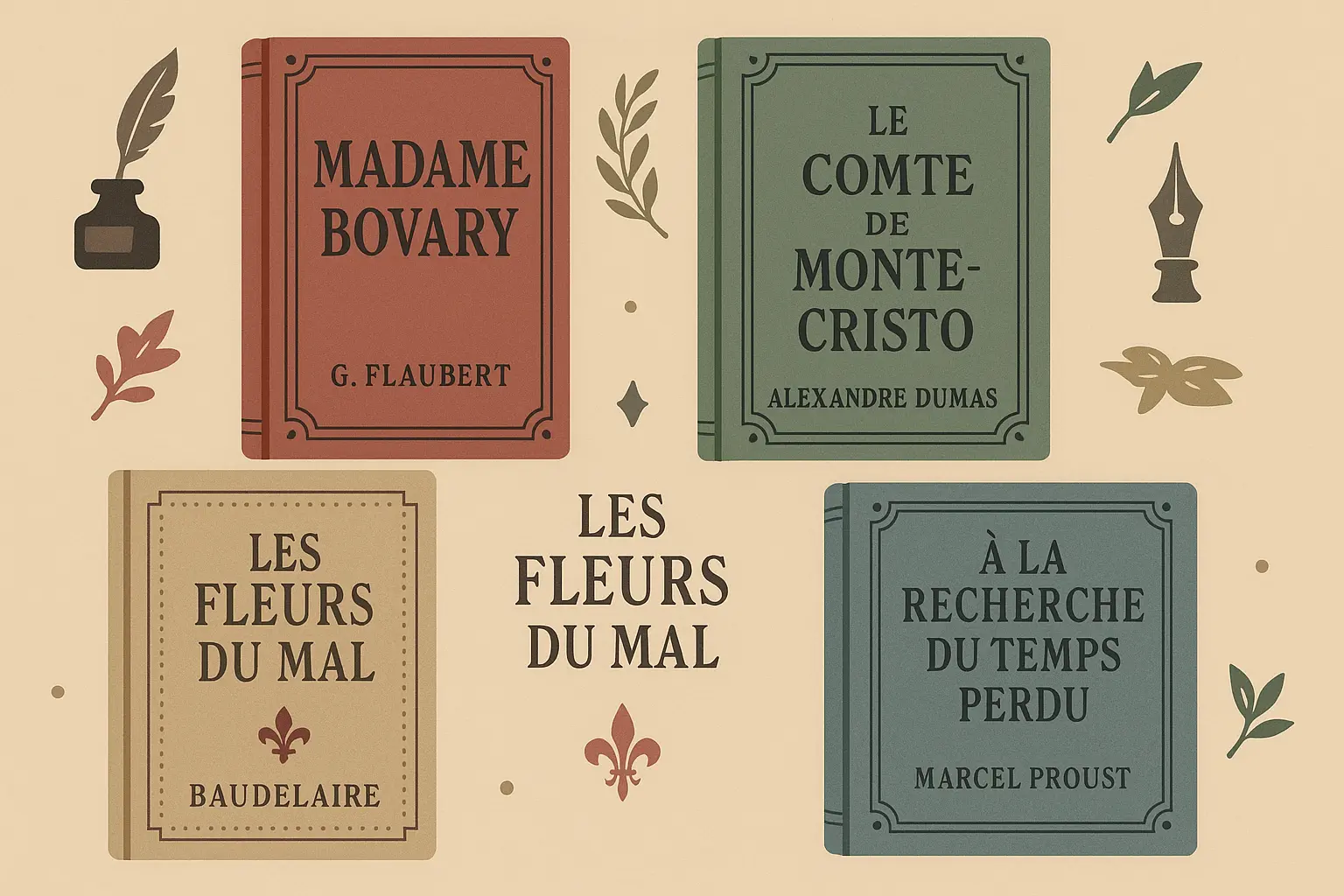
1. “La Belle et la Bête” (Beauty and the Beast) by Gabrielle-Suzanne de Villeneuve
This isn’t just the Disney version you know. The original is way more complex and honestly, way better. Belle isn’t just pretty and bookish – she’s got serious character development going on.
The whole “don’t judge by appearances” thing hits different when you read the full version. Belle’s journey from scared prisoner to someone who sees past the Beast’s scary exterior? That’s some real emotional growth right there.
Plus, the symbolism is everywhere once you start looking for it. The castle isn’t just magical – it represents isolation and what happens when you cut yourself off from human connection.
2. “Le Petit Prince” (The Little Prince) by Antoine de Saint-Exupéry
Fair warning: this book looks simple but will destroy you emotionally. It’s basically a philosophical treatise disguised as a children’s story, and Saint-Exupéry was not messing around.
The Little Prince visits all these planets with adults who’ve completely lost the plot. Each one represents a different way grown-ups screw up their priorities – vanity, greed, alcoholism, blind obedience. It’s brutal and accurate.
The writing style is deceptively simple, which makes the emotional gut punches even more effective. You’ll be reading along thinking it’s cute, then BAM – existential crisis time.
3. “Candide” by Voltaire
Voltaire was basically the master of philosophical trolling, and “Candide” is his masterpiece. Poor Candide gets put through every horrible thing imaginable while his tutor keeps insisting everything happens for the best.
It’s dark comedy at its finest. The disasters pile up so ridiculously fast that you start laughing, which is exactly what Voltaire wanted. He’s making fun of blind optimism while showing you how cruel the world can be.
The satire is so sharp it still cuts today. Every time someone tells you “everything happens for a reason,” think of Candide getting repeatedly destroyed by life.
4. “Carmen” by Prosper Mérimée
This story will mess you up. Carmen is this incredibly free-spirited woman who refuses to be controlled by anyone, and it drives the men around her absolutely insane.
Don José goes from decent soldier to obsessed criminal because he can’t handle that Carmen won’t be possessed. It’s a masterclass in how passion can destroy people, especially when it’s mixed with cultural prejudice.
The tragedy builds so inevitably that you can see it coming from miles away, but you can’t look away. That’s masterful storytelling right there.
5. “Madame Bovary” (excerpts) by Gustave Flaubert
I’ll be honest – I tried reading this three times before it clicked. Emma Bovary annoyed me so much I wanted to shake her. Then I realized that was exactly how Flaubert wanted me to feel.
Emma is stuck in boring provincial life and keeps trying to escape through affairs and shopping. Sound familiar? Flaubert basically invented the “suburban housewife having a midlife crisis” story.
Flaubert’s writing style is insanely precise. He spent forever finding exactly the right word for everything, and it shows. Every sentence does exactly what it’s supposed to do.
Modern French Fiction That’ll Make You Think
These four books represent French writers figuring out how to deal with the modern world – and spoiler alert, they decided it was pretty absurd and depressing. But in a good way?
6. “L’Étranger” (The Stranger) by Albert Camus
Real talk: Don’t feel bad if this book confuses you. Meursault is supposed to be weird – that’s literally the point. If you finish it thinking “what the heck just happened?”, congratulations, you got it.
Meursault doesn’t react to things the way people expect. His mom dies and he doesn’t cry. He kills someone and doesn’t seem to care. Society loses its mind because he won’t perform the emotions they want to see.
The book is basically Camus asking: what if someone just refused to play along with social expectations? The answer is: society will literally execute you for it.
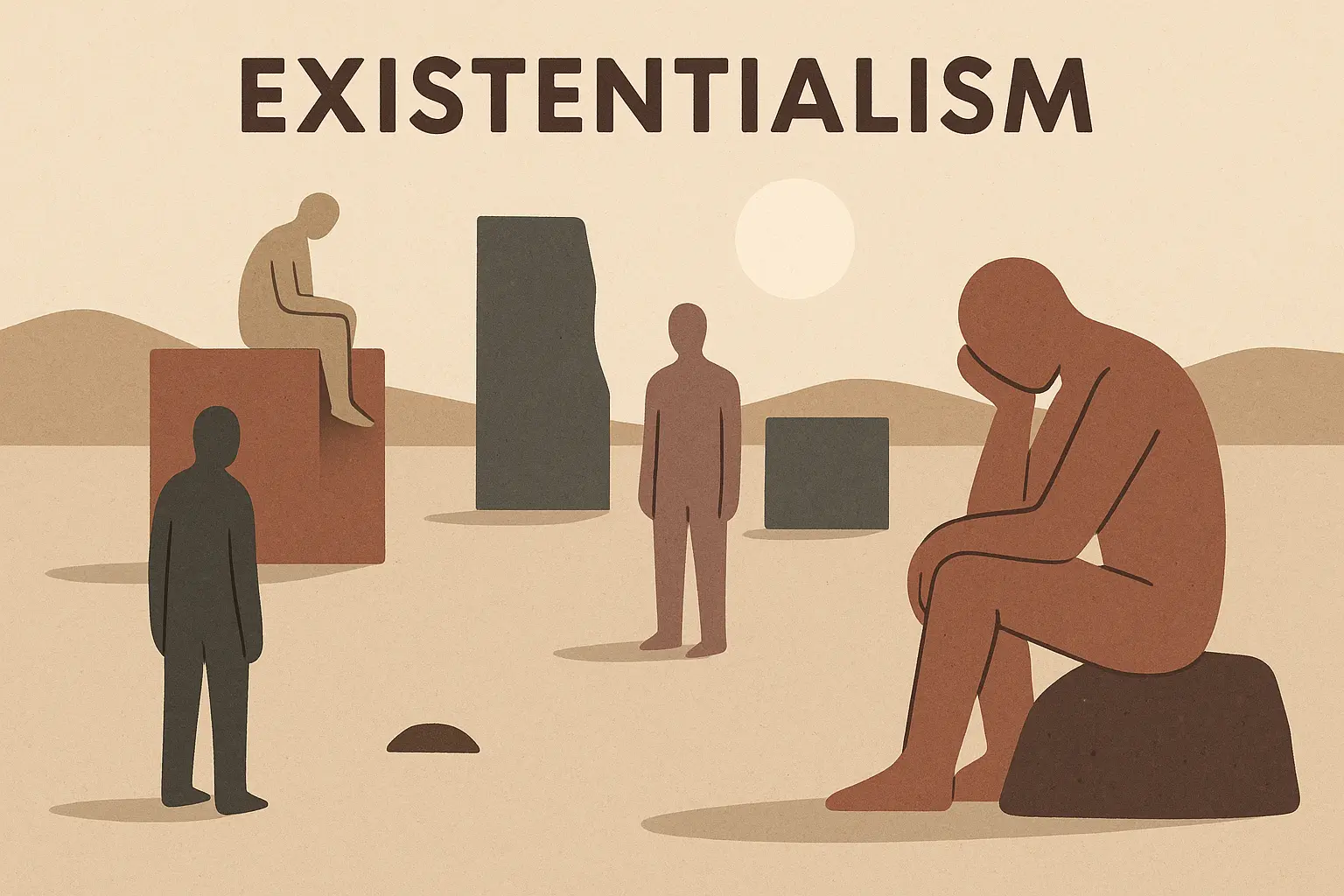
7. “Bonjour Tristesse” by Françoise Sagan
Sagan wrote this when she was 18, which is both inspiring and deeply annoying. Seventeen-year-old Cécile manipulates her dad’s love life and everything goes horribly wrong.
Cécile is sophisticated in some ways and completely naive in others, which makes her feel incredibly real. She thinks she understands adults but keeps making terrible decisions based on incomplete information.
The moral complexity is what makes this story stick. Cécile isn’t evil, she’s just selfish in the way teenagers are, but the consequences are adult-level serious.
8. “Suite Française” by Irène Némirovsky
This book is heartbreaking on multiple levels. Némirovsky was writing about the German occupation of France while it was actually happening, and she died in the Holocaust before finishing it.
The story follows different French people dealing with German soldiers living in their towns. Some collaborate, some resist, most just try to survive. It’s messy and complicated and human.
What’s incredible is how Némirovsky shows that people are people, even in impossible situations. The Germans aren’t cartoon villains, the French aren’t all heroes. Everyone’s just trying to get through it.
9. “Persepolis” by Marjane Satrapi
Originally a graphic novel, but the prose version is just as powerful. Marjane grows up during the Iranian Revolution, and her family’s progressive values clash hard with religious fundamentalism.
The genius is in the child’s perspective. Marjane understands that bad things are happening but doesn’t always grasp why, which makes the political situation even more heartbreaking.
It’s a coming-of-age story set against political upheaval, which unfortunately never goes out of style.
French Kids’ Stories That Adults Love Too
These four stories prove that the best children’s literature works on multiple levels. Kids get the adventure, adults get the deeper meaning, and everyone gets entertained.
10. “Le Petit Chaperon Rouge” (Little Red Riding Hood) – Charles Perrault version
Perrault’s version is way darker than what you probably grew up with. No woodsman comes to save the day – Little Red and Grandma just get eaten. The end.
The moral is crystal clear: don’t talk to strangers or you’ll become wolf food. Perrault literally spelled it out in verse at the end, just in case you missed it.
This represents one of the most influential examples among folktale story examples that shaped how we tell cautionary tales.
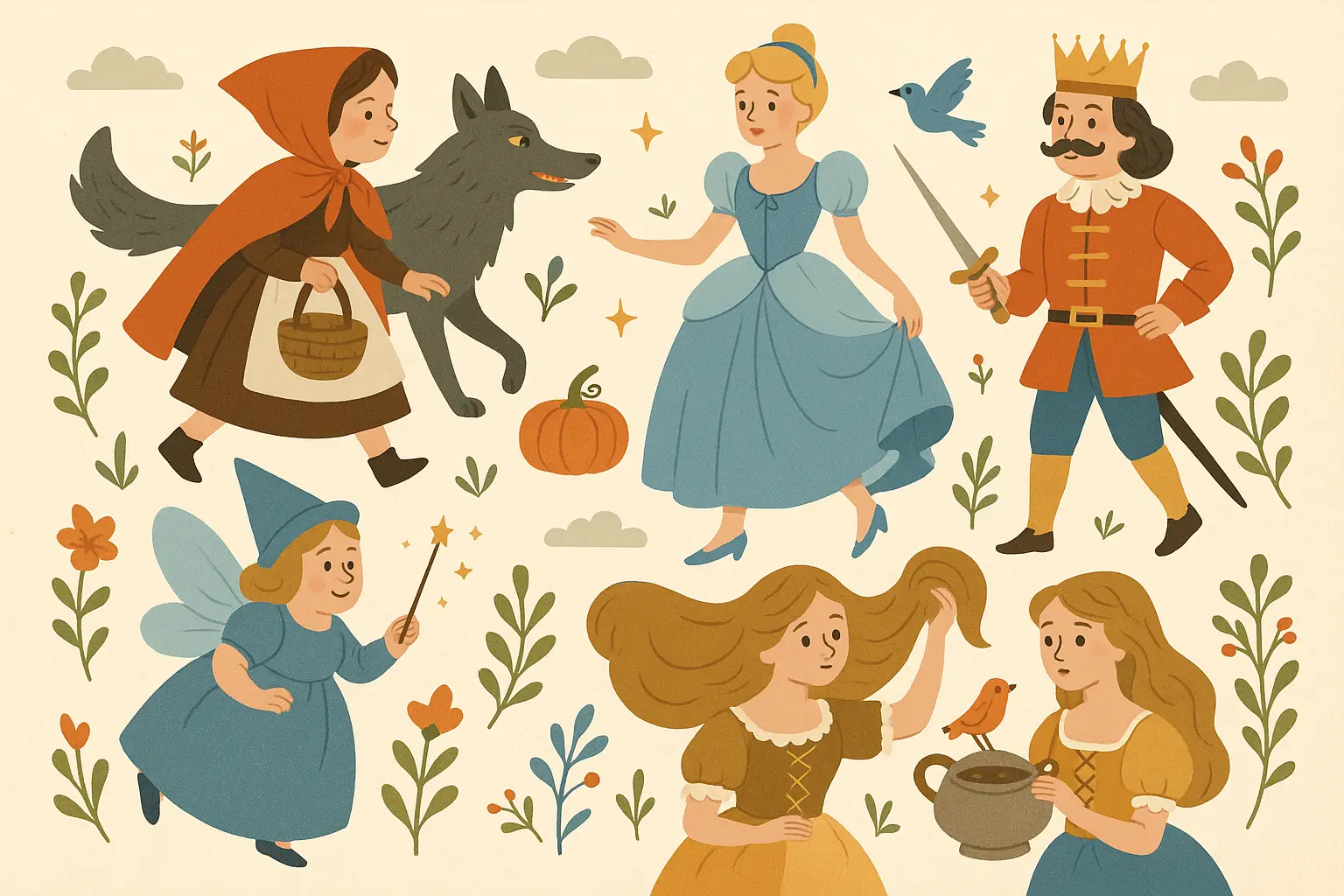
11. “Cendrillon” (Cinderella) by Charles Perrault
Perrault gave us the glass slipper and the pumpkin carriage – basically all the iconic Cinderella stuff Disney borrowed. His version is about virtue being rewarded, but it’s also about getting the timing right.
Cinderella isn’t just patient, she’s strategic. She knows how to work the system (with a little magical help) to get what she wants.
The transformation scene is pure storytelling magic. Perrault describes every detail of the pumpkin becoming a carriage, and it still gives you chills.
12. “Babar” stories by Jean de Brunhoff
Babar goes from wild elephant to civilized king, which sounds cute until you think about the colonial implications. But putting that aside, these stories are about growing up and taking responsibility.
Babar learns human ways and brings that knowledge back to improve elephant society. It’s basically a leadership manual disguised as children’s stories.
The illustrations are gorgeous and help tell the story, which makes these perfect for readers who need visual support.
13. “Martine” series by Gilbert Delahaye and Marcel Marlier
Martine has adventures doing completely normal things – going to school, visiting farms, celebrating holidays. It sounds boring but it’s actually brilliant.
Each story teaches kids about different situations they might encounter while building vocabulary and social skills. It’s educational without being preachy.
The series works because Martine feels like a real kid dealing with real kid situations, not some perfect fantasy child.
Short Stories That Pack a Punch
French writers are absolute masters of the short story. These four examples show how to create maximum emotional impact in minimum space.
14. “La Parure” (The Necklace) by Guy de Maupassant
Oh man, this story will ruin you in the best way. Woman borrows fancy jewelry, loses it, spends 10 years in poverty paying it back, then finds out the original was fake. I’m still not over it.
Mathilde’s vanity drives the entire plot. She wants to look rich at a party, borrows what she thinks is an expensive necklace, loses it, and destroys her life replacing it.
The irony is perfect and devastating. Every detail builds toward that final revelation that makes you want to scream.
Real example: A literature teacher uses this story to show students perfect short story structure. Every single element serves the ironic conclusion – it’s like a masterclass in not wasting words.
15. “Boule de Suif” by Guy de Maupassant
Set during the Franco-Prussian War, this story follows French travelers including a prostitute nicknamed “Boule de Suif” who has to deal with Prussian soldiers.
Here’s the kicker – the prostitute shows more patriotism and integrity than all the supposedly respectable people. The “good” citizens end up exploiting her sacrifice for their own benefit.
Maupassant’s social commentary is brutal. The people who look down on Boule de Suif reveal themselves to be way more morally bankrupt than she is.
16. “Le Horla” by Guy de Maupassant
This psychological horror story is told through diary entries of a guy who thinks an invisible entity is haunting him. Or maybe he’s going insane. Maupassant never tells you which.
The diary format makes you feel like you’re inside this guy’s head as he loses it. You experience his growing paranoia firsthand, which is way more terrifying than any monster.
The ambiguity is what makes it work. Is the Horla real or is this a mental breakdown? Maupassant leaves you guessing, which is honestly more disturbing than a clear answer.
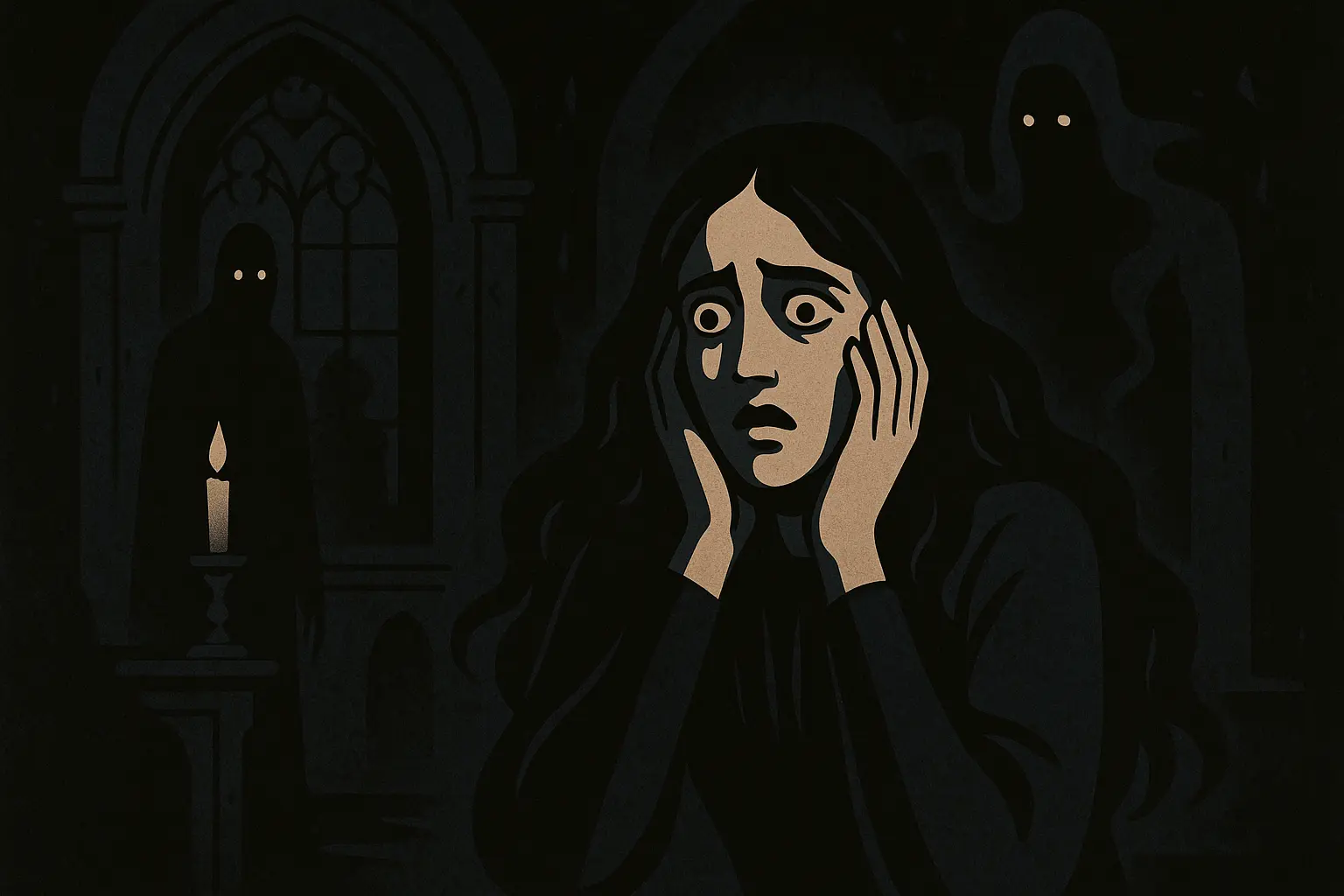
17. “La Cafetière” by Théophile Gautier
This supernatural story about a guy who falls in love with a woman in a portrait during a night in a haunted château is early French horror at its finest.
Gautier builds the Gothic atmosphere through incredibly detailed descriptions of the spooky old château. You can practically feel the dust and see the shadows moving.
The supernatural elements creep in gradually, so you’re questioning reality right alongside the main character. Classic ghost story technique that still works today.
Historical Tales with Real Drama
These four epic stories mix real historical events with adventure, romance, and social commentary. It’s like getting a history lesson that doesn’t suck.
18. “Les Trois Mousquetaires” (The Three Musketeers) by Alexandre Dumas
D’Artagnan and his buddies Athos, Porthos, and Aramis are basically the original squad goals. Their “All for one, one for all” motto represents friendship that actually means something.
Dumas weaves real historical figures like Cardinal Richelieu into his adventure plot, so you’re learning French history while getting entertained. It’s educational without feeling like homework.
The swashbuckling adventure stuff is fun, but the real draw is the friendship between the four musketeers. These guys would literally die for each other.

19. “Notre-Dame de Paris” (The Hunchback of Notre-Dame) by Victor Hugo
Hugo makes Notre-Dame cathedral itself a main character, which sounds weird but totally works. The building represents both spiritual beauty and social oppression.
Quasimodo looks like a monster but has a good heart, while Frollo looks respectable but is actually corrupt. Hugo’s making a point about judging by appearances.
The detailed descriptions of medieval Paris are incredible. Hugo was basically trying to preserve the architecture through literature, and it worked.
20. “Germinal” by Émile Zola
Fair warning: This book is heavy. Like, really heavy. Don’t read it if you’re already having a rough week. But if you want to understand why the French love their strikes, this is your book.
Zola did serious research on mining conditions, and it shows. The descriptions of the mine and working conditions are brutal and authentic.
Étienne’s transformation from individual survivor to labor organizer mirrors the broader workers’ movement. It’s personal and political at the same time.
21. “Le Comte de Monte-Cristo” (The Count of Monte Cristo) by Alexandre Dumas
Edmond Dantès goes from innocent sailor to vengeful count in this epic tale of betrayal and revenge. It’s basically “The Shawshank Redemption” but with more sword fighting.
The revenge plot is incredibly satisfying but also raises questions about whether revenge is worth it. Dantès gets his justice, but at what cost?
Dumas incorporates real historical events like Napoleon’s return from Elba, so you’re getting French history along with the personal drama.
Regional Stories You’ve Probably Never Heard Of
These four collections show how diverse French culture really is. Different regions have completely different storytelling traditions, and they’re all fascinating.
22. “Les Contes de ma Mère l’Oye” (Tales of Mother Goose) by Charles Perrault
This collection includes “Sleeping Beauty,” “Bluebeard,” and “Puss in Boots” – basically the fairy tale greatest hits. Perrault established conventions that everyone still uses.
Each story has a clear moral lesson. “Sleeping Beauty” teaches patience, “Bluebeard” warns against curiosity, “Puss in Boots” rewards cleverness and loyalty.
Perrault transformed rough folk tales into polished stories suitable for French court audiences, but kept the essential elements that make them memorable.
23. “Contes et Légendes de Bretagne” (Tales and Legends of Brittany)
Breton stories are full of korrigans (Breton fairies), sea spirits, and ancient druids. It’s like Celtic mythology survived in the corner of France.
The maritime themes reflect Brittany’s relationship with the sea – it provides life but also brings danger. These stories often work as warnings about ocean hazards.
The supernatural elements show how pre-Christian Celtic beliefs persisted even after France became Christian. The old gods became fairy tale characters.
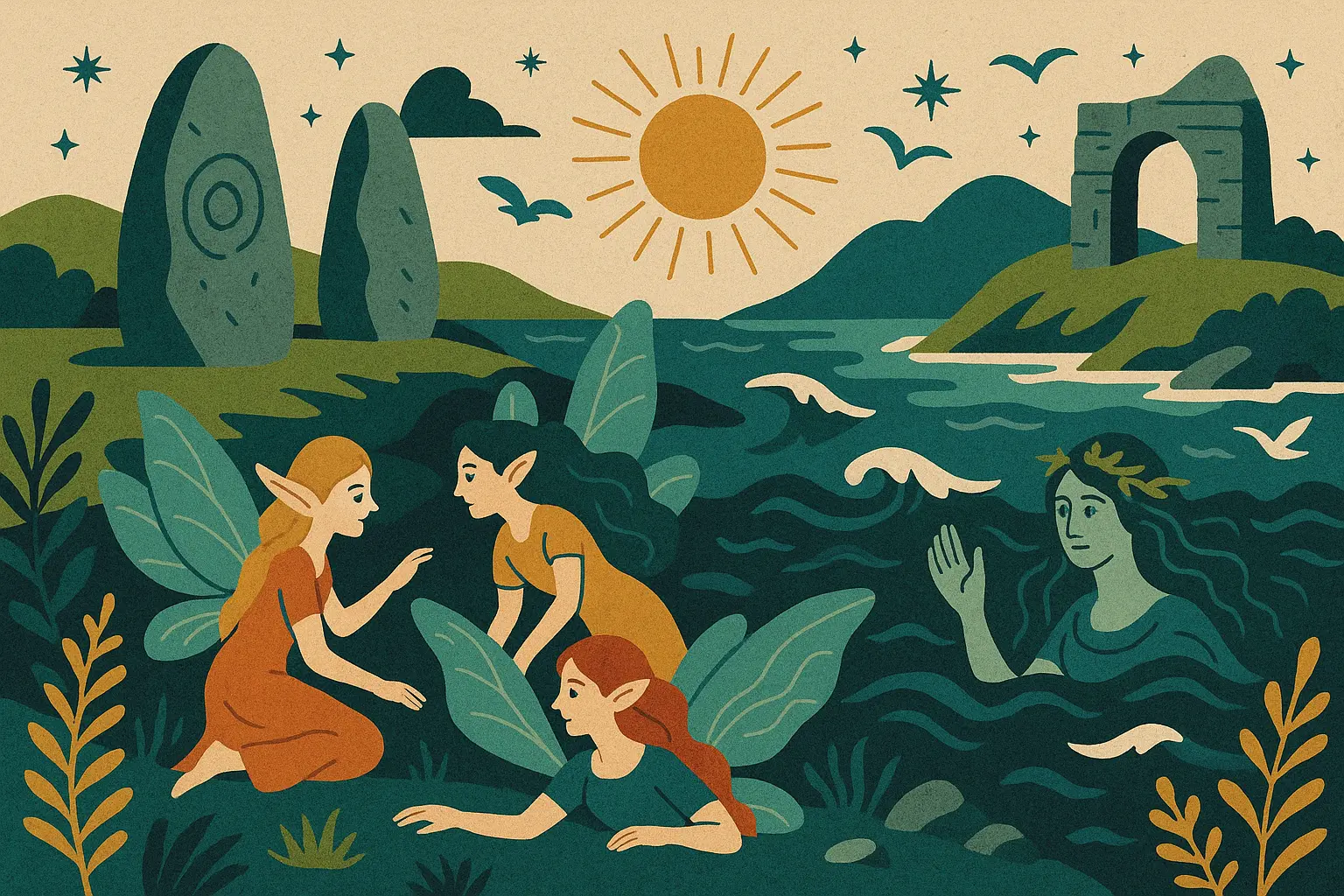
24. “Contes d’Alsace” (Tales of Alsace)
Alsatian stories reflect the region’s complicated Franco-German identity. Characters often navigate between different cultural expectations and languages.
The border themes are everywhere because Alsace has changed hands between France and Germany multiple times. These stories explore how regular people maintain identity despite political upheaval.
The cultural fusion creates unique stories that you won’t find anywhere else – they’re neither fully French nor German, but something distinctly Alsatian.
25. “Légendes des Alpes” (Legends of the Alps)
Mountain stories featuring shepherds and mysterious creatures reflect the harsh reality of Alpine life. These tales often involve survival against natural dangers.
The supernatural elements usually involve mountain spirits that embody the region’s wild, dangerous character. These beings represent both the majesty and terror of mountain life.
Community cooperation is a major theme because you literally can’t survive in the mountains alone. These stories reinforce the importance of helping your neighbors.
Language Levels (AKA Don’t Bite Off More Than You Can Chew)
Here’s the real talk about matching stories to your French level. Don’t be a hero – start where you can actually succeed and work your way up.
Breaking Down the Levels
Beginner stuff uses simple vocabulary and present tense. Fairy tales are perfect because they use maybe 200-300 unique words and straightforward grammar.
Intermediate readers can handle mixed tenses and cultural references. “Le Petit Prince” is the sweet spot – philosophical depth with accessible language.
Advanced stories require understanding complex grammar and cultural nuances. You need both language skills and cultural knowledge to really get what’s happening.
|
Story Type |
Cultural Stuff You Need to Know |
When It’s From |
Main Themes |
|---|---|---|---|
|
Fairy Tales |
Basic French moral ideas |
Medieval/1600s |
Good vs. evil, being virtuous pays off |
|
Existentialist |
Post-war philosophy, absurdism |
1900s |
Alienation, finding meaning, freedom |
|
Historical |
Specific period knowledge |
Depends on story |
Social change, political drama |
|
Regional |
Local customs, geography |
Traditional/ongoing |
Cultural identity, folklore |
Cultural Context Stuff
Some stories assume you know French history. Don’t panic – Wikipedia is your friend. Five minutes of background reading will save you from being totally lost.
Social context matters too. Understanding French class structures and gender roles helps you get why characters make certain choices.
Regional stories need extra background about local traditions and customs. Breton tales assume you know Celtic mythology, Alsatian stories reflect Franco-German cultural mixing.
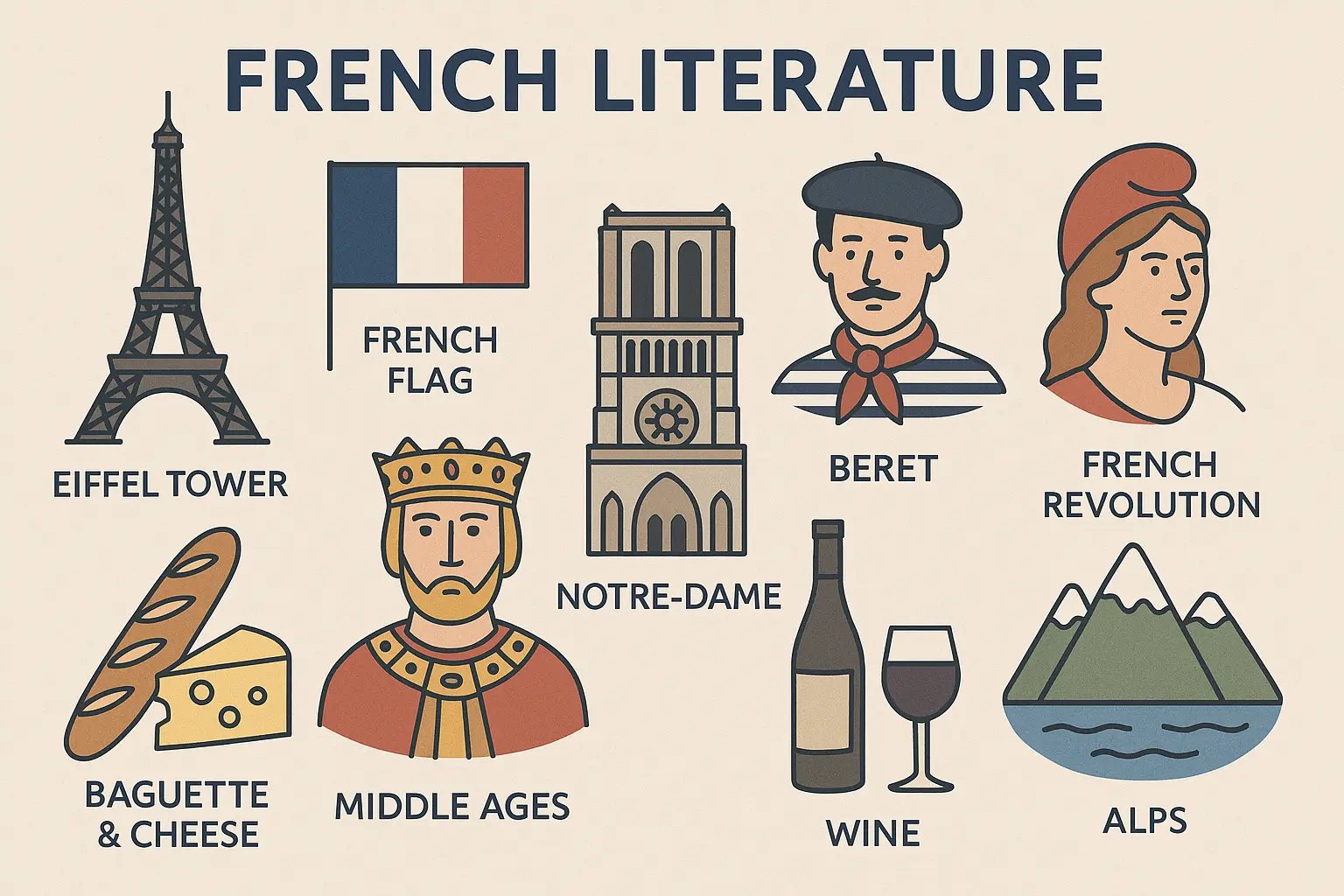
How to Actually Enjoy Reading French Stories
The goal is to have a good time while learning something. Here’s how to set yourself up for success instead of frustration.
Before You Start
Do a little homework on historical and cultural context, especially for complex stories. Understanding what was happening when a story was written makes everything click better.
Get the right edition. Annotated versions explain cultural references, parallel translations help with comprehension. Don’t suffer unnecessarily.
Set realistic goals based on your actual life, not your fantasy life where you have unlimited time and energy.
|
What You Want |
How to Do It |
What You’ll Need |
Time to Plan For |
|---|---|---|---|
|
Learn French |
Start simple, use help materials |
Dictionary, grammar guide |
30-45 minutes per session |
|
Understand Culture |
Focus on historical background |
Cultural guides, documentaries |
1-2 hours per story |
|
Analyze Literature |
Multiple readings, take notes |
Critical essays, scholarly stuff |
2-3 hours per story |
|
Just Have Fun |
Pick what sounds interesting |
Audio versions, movie adaptations |
Whatever works for you |
While You’re Reading
Keep a vocabulary journal for new words and cultural references. This actually helps you remember stuff instead of just looking it up and forgetting it immediately.
Talk about the stories with other people if possible. Book clubs, online forums, or class discussions help you see things you missed.
Connect the stories to modern life and your own experiences. French literature’s themes are still relevant – making those connections helps everything stick.
Real example: Maria, a university student, creates detailed reading journals for each story. For “L’Étranger,” she tracks existentialist vocabulary, notes cultural references to French colonial Algeria, and connects Meursault’s alienation to modern social media isolation. Her professor uses her journal as an example because it shows how active engagement transforms reading from passive consumption to active learning.
Extra Help
Use audio recordings to hear how French sounds and flows. Hearing stories read aloud reveals nuances you might miss reading silently.
Check out movie adaptations and cultural materials for visual context about historical periods and social settings.
For academic study, dig into scholarly resources and critical essays that provide deeper analysis. Understanding first person story examples can help you appreciate how French authors master intimate storytelling techniques.
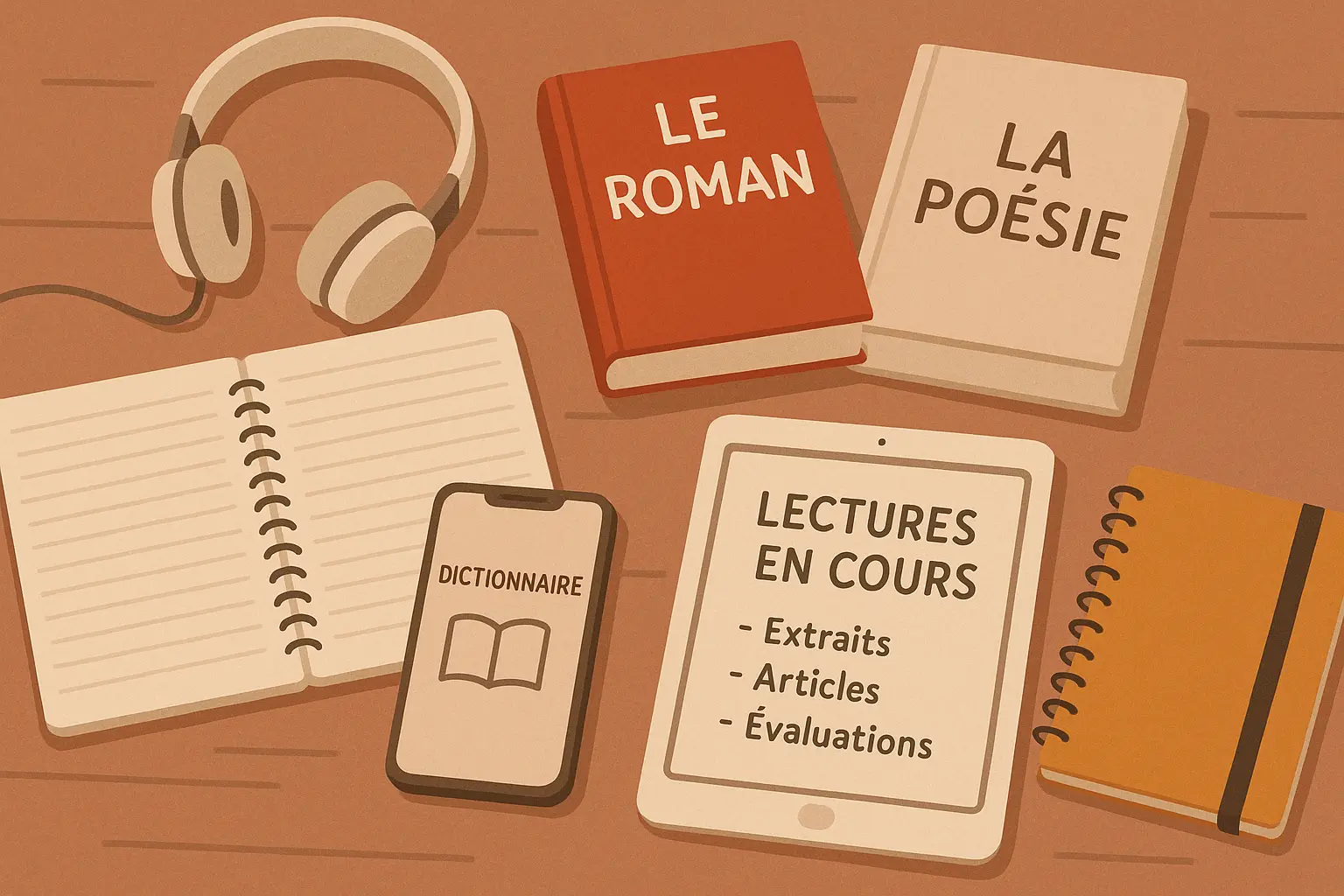
When you’re ready to try writing your own stories inspired by French literary traditions, Nairrate’s AI story generator can help you create narratives that capture the elegance and depth that make French stories so compelling. Whether you’re drawn to the philosophical questioning of existentialist works or the precise irony of French short stories, our platform gives you tools to develop your own voice while honoring these rich storytelling traditions.
Final Thoughts
Here’s the thing about French stories – they stick with you. Six months after reading “The Stranger,” you’ll still be thinking about Meursault at random moments. That’s the magic of French literature – it gets under your skin and changes how you see the world.
These 25 stories represent centuries of French creativity and artistic achievement. They’re not just entertainment – they’re access to a rich cultural heritage that continues shaping global literature today.
Your journey through French stories will be most rewarding when you match your choices to your actual interests, skill level, and goals. Start with stories that appeal to your current abilities, then gradually challenge yourself with more complex works as your skills develop. It’s like how student short story examples show progressive skill development in creative writing.
Remember that understanding grows with each reading. Going back to favorite stories often reveals new layers of meaning you missed the first time around.
The real beauty of French literature is how all these works talk to each other across centuries and movements. Each story you read becomes part of your own literary journey, contributing to a deeper understanding of both French culture and the universal human experiences that connect us all.



Add comment